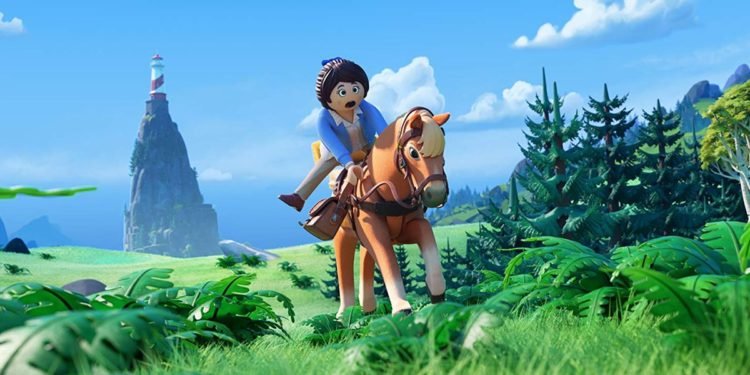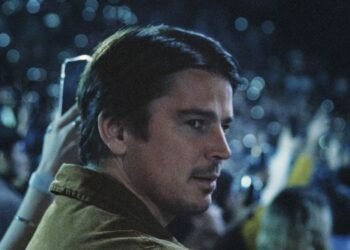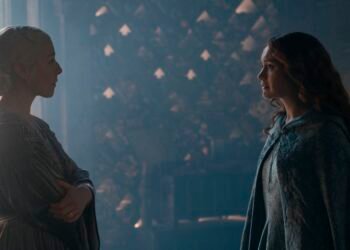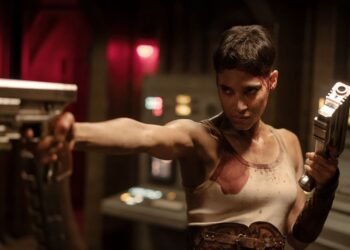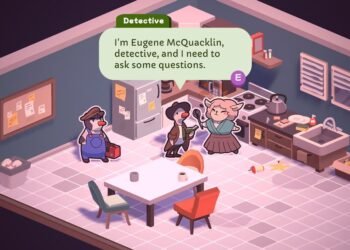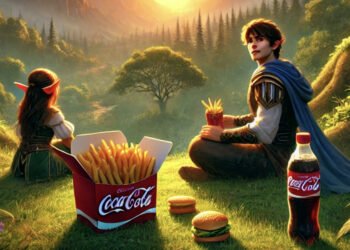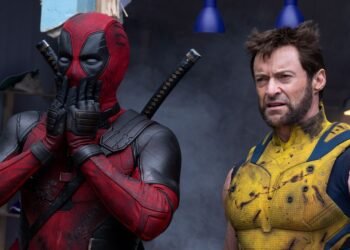When the trailer for Playmobil: The Movie first debuted, it seemed to elicit one universal reaction: “Wait, isn’t this just a cheaper-looking version of The Lego Movie?” Those who can’t tell their Playmobil klickies from their Lego mini-figs can be forgiven for thinking Playmobil is just another downmarket Lego spin-off, like The Lego Ninjago Movie. But, nope, it’s a separate film franchise, designed to do for the German Playmobil company what The Lego Movie did for the Danish Lego corporation.
Yet can this suspiciously similar looking new film possibly hold a candle to the sky-high standard set by Phil Lord and Chris Miller’s modern classic? I set out to answer that question, but Playmobil: The Movie wasn’t screened for critics. So I showed up at an opening-day screening, where I was the only person in my entire theater, much to the ushers’ bafflement. (The man who took my ticket said, “Oh, I thought this was a kids’ movie.” I could only respond, “It is.”) That bit of social awkwardness out of the way, I deployed a five-point criteria to figure out how alike these two movies actually are.

1. The real-world/animation juxtaposition
One of the things that makes the first Lego Movie so great is the big third-act reveal (spoilers ahead!) that the animated story up to that point is an adventure being acted out by a creative kid playing with his perfectionist dad’s Lego set. Playmobil similarly mixes live-action and animated storytelling, although it’s more akin to The Lego Movie 2: The Second Part, where the live-action portion opens the film, and focuses on a brother/sister relationship. In this case, that’s 18-year-old Marla (Anya Taylor-Joy) and her kid brother Charlie (Ryan S. Hill).
However, unlike in The Lego Movie franchise, where the animated world is a representation of the stories the humans are acting out, Marla and Charlie actually get sucked into the world of Playmobil, where they’re trapped inside plastic figurine bodies. (Marla mostly looks like herself, while Charlie is transformed into a super-strong bearded Viking warrior.) In that way, Playmobil feels more like Jumanji: Welcome to the Jungle, or any number of 1990s kids’ films, like Macaulay Culkin’s The Pagemaster.
Verdict: Sort of the same, but with a major difference.

2. The emotional themes
The Lego Movie has a moving emotional core about a dad who needs to learn to loosen up and understand his son. But that’s nothing compared to the emotions at play in Playmobil. Within the first five minutes of the movie, Marla and Charlie’s parents have been killed in a car crash. Four years later, Marla has had to put aside her dreams of traveling the world, so she can serve as a single parent to her little brother (now played by Gabriel Bateman). Charlie is mad that Marla has lost her adventurous spirit and is becoming a boring adult, which is harsh, considering how she’s upended her life for him. But the whole movie is about Marla learning to recapture her youthful zest for life while still being a responsible guardian for Charlie.
Verdict: Very different.
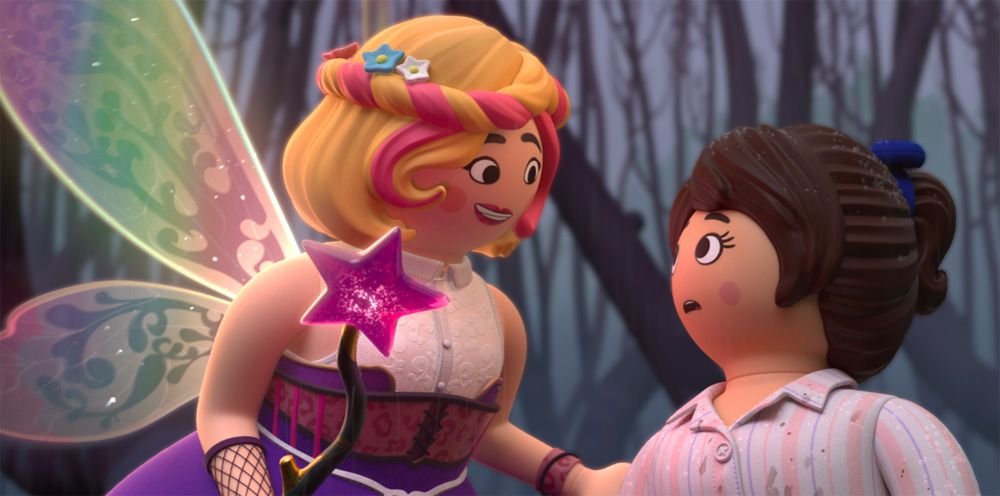
3. The music
The Lego Movie gave the world the almost unbearably catchy tune “Everything Is Awesome,” but it isn’t actually a full-on musical. Playmobil, however, opens with Marla delivering an upbeat live-action musical performance straight out of a lesser Disney Channel original movie. Anya Taylor-Joy is a master of silent intensity in films like The Witch and Split, so it’s a blast to watch her throw herself into something so purely joyful, especially when she turns out to have a surprisingly capable set of pipes.
Unfortunately, most of the songs in Playmobil are generic and forgettable. (Sample lyrics: “This is rad!” / “It’s mad.”) And while this would seem like a clear-cut case of Playmobil at least doing something different than The Lego Movie by more clearly foregrounding the music, The Lego Movie 2 also stepped up the musical commitment from the first film, so even that element feels less unique. Still, the Lego Movie franchise has yet to tackle live-action singing, so Playmobil gets some points for originality. And at least a couple of the film’s songs — including one written by Meghan Trainor — have a few toe-tapping qualities.
Verdict: Different than The Lego Movie, not different than The Lego Movie 2.
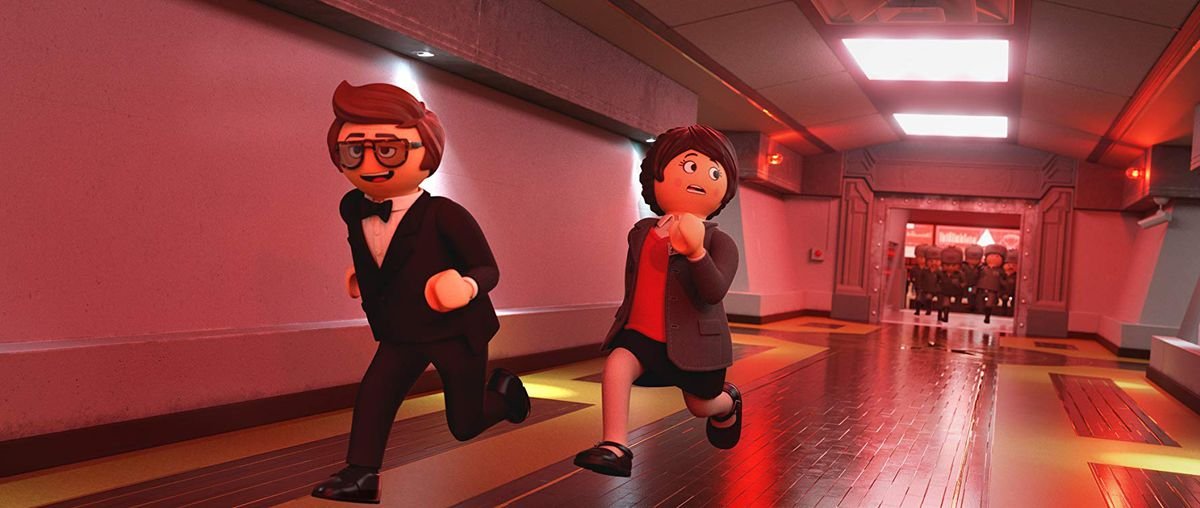
4. The pop-culture references
On the surface, Playmobil isn’t nearly the same IP smorgasbord as The Lego Movie, since The Lego Movie had access to DC Comics and Harry Potter franchise characters, while Playmobil’s biggest franchise tie-in toy lines are Ghostbusters, How To Train Your Dragon, and the NHL. Instead, Playmobil emphasizes the world-building of its play sets. Charlie is kidnapped by evil Emperor Maximus (Adam Lambert), who runs a gladiator competition in the Roman-style kingdom of Constatinopolis. Charlie’s fellow captives include a pirate captain named Bloodbones (Kenan Thompson), a caveman named Ook (Kirk Thornton), and an Amazonian named Valera (Paloma Michelle). Elsewhere, Marla teams up with laid-back food-truck driver Del (Jim Gaffigan) on a mission that takes them to the Old West, a futuristic science-fiction world, and on an espionage adventure with a suave, self-important spy named Rex Dasher (Daniel Radcliffe).
So while Playmobil technically doesn’t name names, it’s has its own take on pop-culture references. Rex is an overt James Bond parody (Radcliffe is hilarious in the role), and a lot of the creatures from the science-fiction world look suspiciously like Star Wars characters. A trip to a fairy-tale kingdom is a chance for first-time director Lino DiSalvo to pay loving homage to his long career at Walt Disney Animation Studios, where he served as the Head of Animation on the first Frozen film. Playmobil has a little bit more of a historical angle than The Lego Movie (plus way more Vikings), but the zanily mishmashed world-building is definitely the place where the two films feel the most similar.
Verdict: Exactly the same, and The Lego Movie does it better.
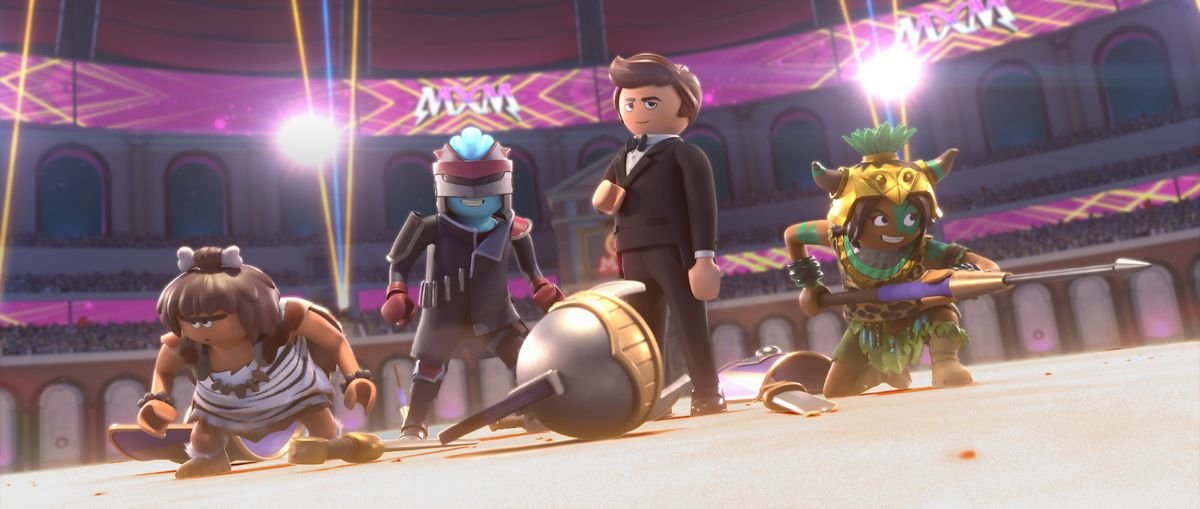
5. The humor
The Lego Movie went for a manic, laugh-a-minute style, while Playmobil only elicits a polite chuckle every now and again. It’s not nearly as funny, but it’s also not really meant to be. Playmobil is aimed at a younger audience, and the filmmakers are less interested in delivering the winking all-ages appeal of The Lego Movie. Instead, they offer up a low-key, non-judgmental message about seeking out adventure and fun where you can find it, even if it’s just through imagination and play.
And there are advantages to that “Be anything you want to be” ethos. For one, the film doesn’t need to strictly define Marla as either a tomboy or a girly-girl. She gets to appear as both a gown-wearing princess and a knight in shining armor, not to mention a spy, a science-fiction heroine, and a comically unconvincing cowgirl.
While a lot of modern kids’ movies (especially those based on toys or apps) feel crass and cheap, Playmobil is heartfelt and earnest. It doesn’t have much to offer childfree moviegoers, and it does mostly feel like The Lego Movie with the serial numbers filed off. But it’s the sort of film that will keep kids entertained without driving their parents crazy. Plus, perhaps due to panic over a potential box-office bomb, the film is being released at a discounted $5 rate at theaters across the country. So while it isn’t the best kids’ movie in town, it just might be the cheapest.
Verdict: Different, and that’s okay.
Playmobil: The Movie is in theaters now.





























